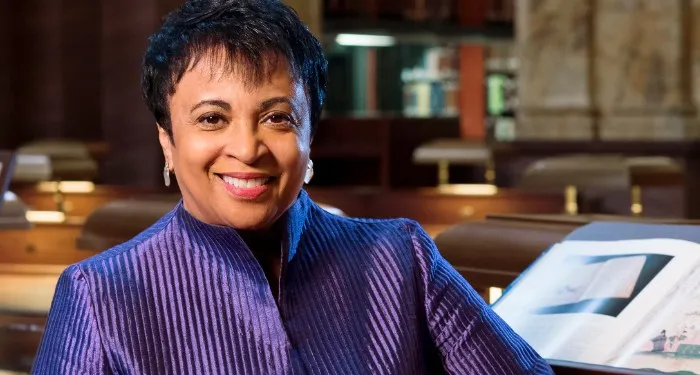The night before the New York City municipal primary, the air was sticky with heat and Ferdousi Begum was too tense to sleep. For the past six months, Begum—a sixty-nine-year-old Bengali immigrant living in a rent-stabilized twenty-unit apartment building in Astoria—had been canvasing in support of Zohran Mamdani’s mayoral campaign with her seventy-one-year-old husband, Parveg Hasan. They had been visiting small businesses, mosques, subway stations, and schools in their neighborhood. “Whenever we found another Bengali, we would engage in conversation,” Hasan told me. “We would start with Salaam. What is your name? Are you a tenant?”
Begum and Hasan have lived in Astoria for seven years. He works late nights selling food from halal carts, mostly in midtown Manhattan; she runs the household they share with their forty-year-old son. They got involved in tenant organizing four years ago, after Begum came across a meeting of the Astoria Tenants Union in a nearby park. She soon joined the group that had convened the meeting, the Committee Against Anti-Asian Violence (CAAAV), founded in 1986 to bring together working-class Asian immigrant communities in Manhattan and western Queens to organize for racial and economic justice.
Some time later she invited Hasan to join. At first he was skeptical, concerned about the work’s potential repercussions, but after several months he “saw it was worth the risk.” Since then the two have been active in the tenant union together, bringing in neighbors one by one. “I tell everyone about organizing. I speak to my friends, family, neighbors about the importance of growing our power,” Begum told me via an interpreter. “Many people come because of me.”
The couple spent months focused on helping Mamdani win. “For us it’s about being able to live in this city,” Begum explained. “The reality is we stay in this city even though we struggle to live here. There’s easy transportation, Bengali groceries. It’s possible to find work…but it’s not possible to make ends meet. Rent is the number one killer. The whole community is suffering.”
On election day Begum got out of bed at 5 AM. By 7 she and Hasan had arrived at the offices of CAAAV Voice, the group’s political sibling organization and a member of the New York State Tenant Bloc, a coalition working to channel tenants’ political power. The members divvied up doors to knock, phone numbers to call, and polling stations to observe. Begum and Hasan got out on the doors themselves, knocked until it got too hot, went home to shower, and returned to the office to phonebank. At 6 PM they joined their neighbors for a last push: three hours of outreach in the park and on the streets, running people to the polls if they hadn’t voted. Hasan got someone there with two minutes to spare.
Just over an hour after polls closed, and about a week before anyone expected real results, Andrew Cuomo, New York’s embattled ex-governor, conceded. Mamdani—a thirty-three-year-old Democratic Socialist assemblymember representing parts of Astoria, Astoria Heights, and Ditmars-Steinway in Queens—took the stage after midnight at his watch party in Long Island City and declared victory. Begum and Hasan had just left the CAAAV Voice office; they were at home, refreshing their phones, when they saw the results. They both slept well that night.
*
To understand how Zohran Mamdani won the mayoral primary by a full 12 points last month, shocking the political establishment in the city and across the country, it helps to understand how tenants like Begum and Hasan decided to go on the offensive against real estate.
There are a number of places where the story could start. Over the last several decades a historic amount of capital has flowed into investments in residential and commercial properties around the world. A complex system of institutions emerged to protect and increase that flow, from real estate trusts to private equity firms.
New York is that system’s global center. As Michael Greenberg has documented in these pages, between 2000 and 2016 survival became nearly impossible for the city’s poorest tenants. During those years, he wrote, New York City developers “contributed $83 million to state assembly and senate campaigns, more than any other economic group.” In Albany legislators routinely blocked pro-tenant bills from reaching the floor. At City Hall Michael Bloomberg’s twelve-year tenure initiated an era of glitzy projects and subsidies, which were billed as incentives for the creation of affordable housing but were in practice sweeteners for developers.
Bloomberg’s successor, Bill de Blasio, criticized him for expanding an underclass, what he called “the other New York.” During his term he oversaw three rent freezes for tenants in the city’s one million rent-stabilized units, but otherwise he followed a playbook on housing that too often resembled Bloomberg’s. Catastrophic tax exemptions and neighborhood-by-neighborhood rezoning led to a speculation boom and skyrocketing rents.
One inflection point came in late 2018, when then-governor Cuomo championed a deal that would have brought Amazon’s second headquarters—a billion-dollar development project—to Long Island City. “HQ2,” as it became known, was to include a waterfront esplanade and enough office space to fill three Empire State Buildings. It was also set to receive nearly $3 billion in subsidies.
After the bid went public, a coalition of grassroots groups—many of which I know in my capacity as an organizer with the national Tenant Union Federation—rallied to oppose the project. The central question was rent. At the time Queens was already the site of the steepest rent hikes in the country, and many tenants feared that the HQ2 project would supercharge gentrification across the borough.
“Our members saw the writing on the wall,” Sasha Wijeyeratne, the executive director of CAAAV and CAAAV Voice, told me. “They knew that an influx of wealthy Amazon employees would raise rents, and the cost of everything else around them, and that the local bodegas, restaurants, and laundromats would be priced out.” Responding to public pressure, politicians like Corey Johnson—then speaker of the city council—and councilmember Jimmy van Bramer came out against the deal. “Why do you need our money? We have 63,000 people who are sleeping in homeless shelters,” Johnson asked. “Don’t you think there is a better way for us to spend $3 billion?” Community members booed Amazon representatives out of a city council meeting.
The pressure proved too much. In February 2019, three months after announcing the development, Amazon backed out. Organizers declared victory, but they were sober about the likelihood of the movement’s ongoing success: if it wasn’t HQ2 it would be another megadevelopment. During that time, Wijeyrante told me, tenant organizations began to have more sustained conversations about how to escape these reactive fights.
Tactics are what organizers do; strategy is why we do them. The tenant leaders, Wijeyrante suggested, felt a need to sharpen their long-term strategy. One way was to clarify precisely what they were up against—not just individual landlords or management companies but the system of real estate and financial institutions that collaborate to set the terms of the market and influence policy in their favor. “We began zeroing in on real estate capital as the enemy,” Wijeyrante said. “We needed to make that money toxic.”
*
In New York, landlords and real estate capitalists exercise power through a lobbying group called the Real Estate Board of New York. “REBNY exerts vast influence over the New York institutions that shape public policy,” the longtime tenant organizer Cea Weaver told me, “from the City Council to the Rent Guidelines Board to the state legislature—all in service of their bottom line.”
Weaver leads Housing Justice for All, a statewide coalition founded in 2017 that brings together over eighty tenant organizations, including CAAAV. In 2019, when she signed on as the coalition’s first full-time staff member, she drove across the state to recruit organizations from Buffalo to the Mohawk Valley and organized busloads of tenants to go to the state capitol. They were campaigning for the passage of the Housing Stability and Tenant Protection Act, which would make rent protections a permanent feature in New York’s housing law, expand rent control, and restrict landlords’ ability to exploit loopholes to escape regulation. That June the law passed—a landmark victory.
The win would not have been possible without a new crop of legislators. In 2018 a coalition of seven candidates, one of them put up by a resurgent Democratic Socialists of America (DSA) and six by the Working Families Party (WFP), had primaried and defeated members of the Independent Democratic Caucus—a group of Democrats who had started caucusing with their Republican colleagues, often against the interests of the working class, including opposing rent stabilization. (Among the successful challengers were two candidates in this year’s mayoral election, Jessica Ramos and Zellnor Myrie.) The DSA candidate, Julia Salazar, pledged not to take campaign contributions from developers and landlords and ran on a platform that stressed her support for rent control. This influx of new lawmakers produced “not just a functional Democratic majority in the state senate,” the writer and urban planner Samuel Stein wrote at the time, “but a group of reformers in office with strong allegiances to tenants and the tenant movement.”
Even so, the organizers felt outpaced by the real estate industry and underprepared to sustain their achievements. “As long as I’ve been a tenant organizer, I’ve been told real estate in New York is like oil in Texas,” Sumathy Kumar, the campaign director at Housing Justice for All, told me. “This is how power works in this state. They just throw their money around everywhere. It’s not just that so many politicians are taking their money, it’s also that they think they might start funding against them if they do anything pro-tenant. Electeds are terrified.”
In 2022 another proposed development drew the movement’s attention. That spring Silverstein Properties, BedRock Real Estate Partners, and Kaufman Astoria Studios petitioned the City Council’s Land Use Committee to approve a development project called Innovation QNS. It involved rezoning a five-block manufacturing district to build 3,200 housing units in Astoria, a neighborhood in Mamdani’s district where 87 percent of the residents were then tenants, nearly 70 percent of them either rent burdened or severely rent burdened (which is to say, spending over half their incomes on rent). The proposal barely met the legal minimum requirement that 25 percent of its units be affordable—a standard that rarely creates truly affordable housing in any case, having more to do with what a developer can afford to build than with what a tenant can afford to pay.
CAAAV, Desis Rising Up and Moving (DRUM), and Queensbridge Houses residents collaborated with the DSA, Queens Neighborhood Union, and other organizations to defeat the proposal. Among their supporters was Mamdani, then two years into his term as a state assemblymember in Albany and a steady ally of the tenant movement. (The previous year he had gotten arrested during a protest at Cadman Plaza calling for a pandemic eviction moratorium.) Now he spoke at protests and gave comments to the press, flanked by signs with slogans like OUR NEIGHBORHOOD ≠ YOUR PIGGY BANK. “I am in firm opposition to this proposal,” he tweeted that June. “My opposition does not stem from its proposed density…. It is entirely because of the absolute paucity of affordable housing within this proposal. To build 2,120 market rate units with a set aside of only the legal minimum of 25 percent affordability is not an answer to this housing crisis—it is a cause.”
Ultimately the tenant-led coalition, with sustained support from Mamdani, forced the developer to deepen the project’s affordability requirements. Of the total Innovation QNS units, 1,100 would now be income-restricted; of those, five hundred would be rented at 30 percent of the area median income, which would make them available to individuals earning around $28,020 a year or families of four making $40,020 a year. It was a significant concession. If tenants were to go on the offensive in the coming years, it seemed, Mamdani was a promising early draft pick.
*
Last year CAAAV Voice convened a team of tenants from across the city to develop a proposal for a campaign to win a citywide rent freeze for rent-stabilized units, which they saw as a step on the path to universal rent control. They weren’t alone. Other organizations involved with Housing Justice for All—including Community Action for Safe Apartments (CASA), Housing Conservation Coordinators, Tenants & Neighbors, the Metropolitan Council on Housing, and New York Communities for Change (NYCC)—were considering similar options.
It was a sign of a broader strategic shift. In Albany, a mighty backlash against the Covid-era eviction moratorium had helped REBNY regain ground after the tenants’ 2019 victory. In April 2024 “good cause” eviction protections, which Housing Justice for All had spent years fighting to codify, finally passed, but the coalition was forced to accept major compromises—including exemptions that left millions of tenants unprotected. Finding themselves on the back foot at the state legislature, they knew they needed to try something new. Within the movement, leaders started talking more seriously about an electoral strategy that would put organized tenants face-to-face with organized capital.
At the city level, meanwhile, the Rent Guidelines Board—a nine-member body appointed by the mayor and charged with setting rents for the city’s rent-stabilized units—had become increasingly hostile to low-income tenants over the course of Eric Adams’s tenure, raising rents twice in as many years. When the board voted through a third raise that June, a group of a hundred tenants, organized by the Rent Justice Coalition, protested the decision at Cooper Union and got arrested. Mamdani was among them.
Three months later he reached out to CAAAV Voice and asked them to be among the groups that would endorse his candidacy on the day he announced his run for mayor. Soon thereafter, as CAAAV Voice’s organizing director Alina Shen recounted to me, she found herself in an elevator at the CUNY Labor Center with Fahd Ahmed, the executive director of DRUM Beats, the political sibling to DRUM. She asked, “Hey, are you going to endorse? We need to make a call.” By the end of the day they were in a group chat with organizers at NYCC. The next week they decided to run a joint endorsement process.
On October 21 over two hundred people affiliated with the trio of groups gathered at the NYCC offices with interpreters in four languages to pose questions to Ramos, Mamdani, and, over Zoom, Brad Lander. Mamdani might have seemed the clear choice: at the time he was the only candidate willing to commit to a rent freeze. But endorsing him was neither obvious nor risk-free: he had virtually no name recognition, and the crowded field included some longer-running and more experienced progressive champions, like Lander, who had deep relationships with institutions like the WFP.
Nor were tenants willing to line up behind Mamdani uncritically. When Mr. Chen, an elder with the Chinatown Tenant Union, questioned Mamdani, Shen recounted to me, the candidate greeted him with a friendly “Ni hao.” Chen, uncharmed, held eye contact and told him, “We need reassurance you are not going to leave us behind as you ascend. You need to see how we live.” After the meeting Mr. Chen followed Mamdani out of the room and made sure they scheduled a day for him to visit the neighborhood.
But in the end Mamdani’s commitment to a rent freeze won out: each group agreed to endorse him on day one. “Every politician says New York is the greatest city on the globe,” Mamdani said in his launch video on October 23. “But what good is that if no one can afford to live here?… This is New York. We can afford to dream.”
*
In January the Housing Justice for All coalition launched a statewide electoral arm called the Tenant Bloc, which counts CAAAV Voice, DRUM Beats, and NYCC as members. It was an experiment in activating what the Cornell geographer Russell Weaver—no relation to Cea—has called the “sleeping giant” in New York politics: tenants as a political class. “Tenants are half the state,” the group declared. They could be a dominant political force—if they organized themselves “from the buildings to the ballot box.”
The group’s first major undertaking was a campaign to build support for a citywide rent freeze. The mayoral race was a natural occasion: organizers started knocking doors across the city, asking tenants to sign a pledge that they would vote for a candidate who supported the policy. Rather than back Mamdani from the get-go, as several of their members had, they hoped to build a base they could route toward whichever candidate they ultimately endorsed, applying pressure to the whole field in the process.
Among the campaign’s co-chairs was Joanne Grell, a Puerto Rican single mother of two who lives in a rent-stabilized apartment in the Pelham Bay section of the Bronx, where she serves as president of the tenant association. She found the apartment on Craigslist twenty-four years ago, when her kids were two and five and she was freshly separated from her husband. It is a spacious two-bedroom in a thirty-two-unit prewar building, with a big kitchen and one tiny bathroom. She raised her kids there and put them both through college; now one is in medical school and the other just had a film premiere at Sundance. “None of this could have been accomplished,” she told me, “without stabilized rent.”
In 2020 Grell went back to college, attending classes at night while working her job as an executive legal assistant at NewYork-Presbyterian Hospital by day. One of her assignments, for a class on community organizing, was to observe an organization’s meeting; she chose one hosted by CASA, based on the other side of the Bronx. When she went to the meeting, she felt that it was “home for me,” she said. “I thought, you know what? My building does need repairs, we have common complaints, let me start a tenant association.” Before long she had recruited all of her building’s residents. “I read a story that said one in twenty-four New Yorkers was a millionaire and I was like wait—this is becoming the land of the rich,” she told me. “We have to hold on with both hands.”
This past January REBNY held its annual fundraiser, a $2,500-per-plate affair at a waterfront venue in Hell’s Kitchen. Kathy Hochul gave remarks; among the honorees was Scott Rechler, CEO of the firm RXR Realty, which owns thousands of residential units in New York. Outside the venue the newly formed Tenant Bloc organized a picket they called the People’s Gala—Grell wore pearls and borrowed a full-length fur coat from her neighbor to look the part. To the rhythm of a bucket drum, the crowd chanted “UP, UP WITH TENANT POWER/DOWN, DOWN WITH REAL ESTATE,” greeting landlords on their way into a banquet funded by their tenants’ rent checks.
The Tenant Bloc’s strategy involved more than just this kind of confrontation. It built a field operation that included over seven hundred volunteers and twenty-five field leads who knocked doors in every part of the city, collecting 20,646 pledges from rent-stabilized tenants to support a mayor who backed a rent freeze. In May the bloc formally endorsed Mamdani. A week later they gathered more than a thousand tenants for a rally at Riverside Church. Between the endorsement and the primary they sent tens of thousands of texts and placed tens of thousands of calls to get out the vote.
The component organizations of the Tenant Bloc ran their own operations. At the height of their activity CAAAV Voice was in five neighborhoods—Sunnyside, Astoria, Jamaica, Sunset Park, and Chinatown—nine times a week. Tenants like Parveg Hasan went to mosques every Friday to recruit voters. Elisa Martinez, a young tenant who grew up in Washington Heights, canvased her neighborhood with a focus on the Dominican community, which accounts for 15 percent of the city’s rent-stabilized tenants. Delsenia Glover, the president of the historic Lenox Terrace Tenant Association in Harlem, organized her building to sign on to the campaign. Grell told me about a tenant named Mercedes, a retired social worker, who built a crew to take the petitions to college campuses. The bloc’s call for a rent freeze—and to rank Zohran first on the ballot—broke into Whatsapp group chats and ethnic media, including El Diario, Bangla TV, and the World Journal, the largest Chinese newspaper in the US.
Predictably, real estate power players found their own ways to engage in the mayoral race. Last year two long-standing landlord lobbying groups merged to form the New York Apartment Association. (Its inaugural CEO, Kenny Burgos, is a thirty-one-year-old former assemblymember who makes landlord-friendly TikToks and attended high school with Mamdani.) In June, as Mamdani rose in the polls, the NYAA announced that it would spend $2.5 million to support Cuomo via a Super PAC called Housing for All—at the time the single largest donation in the mayoral election cycle.
*
The election was supposed to be about crime. Eric Adams had won the office in 2021 on a law-and-order agenda, and when Andrew Cuomo entered the race it was with a platform to “make New York safer and more respectful of others.” (He committed, among other things, to increasing the police force by 15 percent.) But over the course of the campaign it became clear that Mamdani’s focus on the cost of living was resonating—and that the single biggest threat to the city’s affordability, the biggest line-item in working-class New Yorkers’ monthly budgets, was rent. When the day-one endorsers got behind Mamdani, he was the only candidate supporting a rent freeze. By the last weeks of the primary the Tenant Bloc, along with the pressure of Mamdani’s skyrocketing success in the polls, had moved six more candidates—Brad Lander, Adrienne Adams, Zellnor Myrie, Jessica Ramos, Michael Blake, and Scott Stringer—to join him.
For his part, Mamdani did an elegant dance on housing. “I’ve already told you about my commitment to freeze the rent for every single rent-stabilized tenant,” he told the camera, standing on Atlantic Avenue in a February video, tall residential buildings looming behind him. “But what about the other half?” For them, he went on, “we need more housing—a lot more.” In his platform he promised to “triple the amount of housing built with City capital funds,” including by significantly expanding the city’s Senior Affordable Rental Apartments and Extremely Low and Low-Income Affordability programs, which subsidize the construction of affordable housing for seniors and low-income households, respectively. At the same time, he also threw his support behind such measures as upzoning wealthy neighborhoods, eliminating parking lot requirements, and encouraging housing growth “around subway stations and other public transit hubs,” policies that many developers might favor more than they do his slate of tenant protections.
In a city fraught with smug and unproductive housing discourse—including plenty of bad-faith online screaming by YIMBYs and NIMBYs alike—Mamdani suggested that we might not have to choose between support for tenant protections on the one hand and zoning reform on the other. In an “ask me anything” session on Reddit this past April, one participant asked him whether he agreed or disagreed that “market-rate development is helpful and good, and we should encourage more of it.” His response was deft:
Agree that we need a LOT more housing of all kinds, and in my housing plan, I call for increased zoning capacity around transit hubs, upzoning wealthy neighborhoods, and fully eliminating the parking mandate citywide…. I led with city capital–funded affordable housing…for two reasons: 1) I want to be held accountable to outcomes, but that’s hard to do when it comes to piecemeal rezonings that are essentially just an invitation to private developers 2) we’re a long ways off from for-profit developers building deeply affordable housing at scale. That’s where the greatest emergency is, and it requires a public-sector approach. Mine will be a pro-housing administration, and it will be one that understands the importance of all kinds of housing growth so that we can meet the scale of this crisis.
The top-line item, however, never changed. In May the campaign released a thirty-second spot that ran for ten days as their main advertisement both on digital platforms and television, including during Knicks games during the team’s playoff bid. It begins with Mamdani jogging down a residential block. Looking straight into the camera, he declares: “I’m running for mayor to freeze the rent for every rent-stabilized tenant.” Block letters appear on the face of a building: FREEZE THE RENT. Cut to the building—it’s Grell’s. She walks out in a jean jacket. “Yes,” she says, “this guy’s gonna freeze the rent.”
*
Mamdani’s win wasn’t marginal—it was a mandate. When the New York City Board of Elections released the primary’s ranked-choice voting results, they showed him defeating Andrew Cuomo by 56 to 44 percent. Mamdani swept parts of the city that would be affected by the rent freeze. As Charlie Dulik has shown in a recent article for NY Focus, he won more first-round votes than Cuomo in seven of the ten assembly districts with the largest share of rent-stabilized units—districts that include much of Astoria, Long Island City, Inwood, Washington Heights, Prospect Lefferts Gardens, central Harlem, and Chelsea, as well as parts of Flatbush and Midtown. Compared to the last municipal election, turnout in tenant-majority areas rose by 7.5 percent.
Real estate is not used to losing in New York. On the Wednesday after the primary, in a sign of investor panic over the Mamdani effect, publicly traded landlords with portfolios concentrated in the city sustained hits to their stock prices: SL Green’s dropped by 5.7 percent, Vornado Realty Trust’s by 6.7 percent, and Empire State Realty Trust’s by over 7.5 percent. The industry, which had invested millions into Cuomo’s campaign directly and through various Super PACs, had to reassess its approach.
Some important players are threatening to move their business dealings to Florida. Others have lined up behind Eric Adams, who once proclaimed, “I am real estate.” Two weeks after the election Marc Holliday, the CEO of SL Green, hosted a fundraiser for Adams at One Madison Avenue, one of his office towers. Rechler, the RXR CEO, who also sits on REBNY’s board, took a jab: “New York is the capital of capitalism, and it seems inappropriate to have a socialist mayor in a city like ours.”
On June 30, meanwhile, the Rent Guidelines Board met for their annual hearing and voted through their fourth consecutive rent hike under Adams. Grell was among the tenants who gathered to protest. “This is nothing but a political payback from real estate mayor Eric Adams,” she told the crowd. “He’s mad we…helped Zohran win just one week ago. And now his RGB is trying to use their power to punish us, working class tenants. Why? Because we’re building something that they cannot control: tenant power.”
Mamdani’s victory in the primary was so decisive that it can now seem preordained. But as recently as six months ago he was an unknown and the rent, as a political matter, was a third rail. Tenants and Mamdani took a bet on each other. Mamdani’s gamble, rare in politics, was to stand for a controversial policy proposal—a rent freeze—and make an early, unwavering commitment to his chosen team: working-class tenants. Tenants, for their part, were taking a chance on a new kind of power, funneling time and resources into electoral campaigning rather than the familiar terrain of legislative advocacy. Both those choices carried risks, and neither was assured of success in advance.
For now the tenants still have a city to win. Everyone I spoke to felt that the offensive had just begun, that the movement could afford neither to let up on the outside pressure nor abdicate its responsibility to govern. After the win Hasan deflected questions about his reaction to the results. Instead he focused on what comes next. “There’s a big fight ahead, now through November,” he told me. “And the election is not the end. We must be disciplined. We must remember our enemy. We must build our power. We need to fight until we win a rent freeze. And then we need to fight more.”






















 English (US) ·
English (US) ·